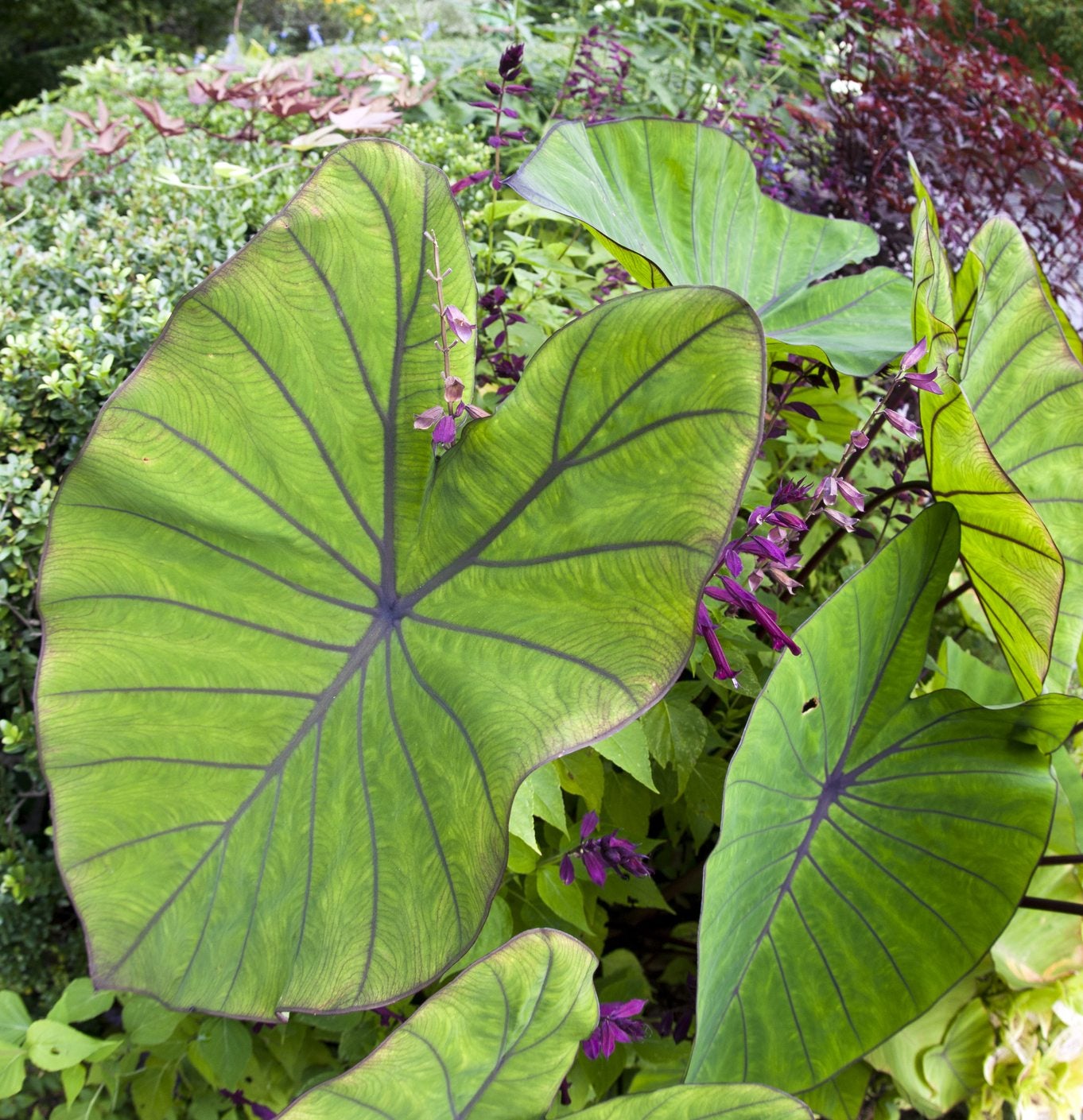Elephant Ear Plant Types: Learn About Common Elephant Ear Plants


Elephant ears are one of those plants whose foliage receives double takes and oohs and aahs. Many species are commonly referred to as elephant ears due to the large leaves. These natives of tropical regions are only reliably hardy in United States Department of Agriculture zones 10 and 11 but can be grown as houseplants and summer annuals anywhere. There are different elephant ear plants in four genera available for growing in your landscape.
Types of Elephant Ear Bulbs
Elephant ear is the name given to plants with large foliage shaped like a pachyderm's ear. Many produce white spathes and spadix flower forms. From giant plants reaching almost 10 feet (3 m.) tall to diminutive 2-foot (0.5 m.) tall species, elephant ear plant types are all excellent in partial shade to full sun in rich, moist soil. There are four types of plants called elephant ears: Colocasia, Caladium, Alocasia and Xanthosoma.
- Colocasia – The first of the elephant ear plant types is Colocasia. Colocasia is native to swampy areas of Asia and spans 200 species. Leaves may grow up to 3 feet (1 m.) in length and 2 feet (0.5 m.) across. The heart-shaped leaves can reach 8 feet (2.5 m.) in height on long rigid petioles.
- Caladium – Caladium is the name for common elephant ear plants found in nurseries. These foliage plants are perennial and can be hardy down to USDA zone 8. This much smaller elephant ear species only reaches 2 feet (0.5 m.) in height with foliage measuring 8 to 12 inches (20-30.5 cm.) in length.
- Alocasia – Alocasia produces calla lily like blooms on 6-foot (2 m.) tall plants with arrow-shaped foliage.
- Xanthosoma – Xanthosoma need temperatures consistently over 68 degrees Fahrenheit (20 C.). The arrow-shaped blades typically have decorative veins. Xanthosoma is not commonly cultivated.
Growing All Elephant Ear Plant Types
If you live in a warm region, you can start your elephant ears right into a prepared garden bed. Northern gardeners should start them indoors in well-draining soil, or in a greenhouse. These plants perform well in either acidic, clay, sandy or loamy soils. They do very well in a half day of full sun but can thrive in a full day with a little protection, such as dappling from an above tree. Alocasia can spread quickly, as can Colocasia in warm regions. If they become a pest, move the plants to containers to control them. Each of the different elephant ear plants has a slightly different cultivation range regarding water. Colocasia is a wetland plant that requires consistent moisture while the other species need less water and cannot stand to be soggy. Alocasia is especially sensitive to boggy conditions so ensure a soil that drains well.
Care and Feeding of Elephant Ears
Each of these spectacular elephant ear plant types is fairly easy to grow. Bring the smaller forms, such as most Alocasia, indoors in winter to grow until temperatures warm. Larger plants, like Colocasia, can stay in the ground but the foliage may die back if the temperatures get cool. Spread thick mulch around the root zone to protect the bulbs and in spring they will redevelop. In cold regions, dig up the bulbs, allow them to dry for a day or two and then save them in mesh bags in a cool, dry area. Many of these plants can be sensitive to tap water. It is a good idea to use rainwater when possible or at least allow your tap water to sit for a day before applying to the plant. Use a diluted liquid plant food starting in spring once per month. Prune off foliage as it dies or gets damaged. Watch for mealybugs, slugs, snails, caterpillars and grasshoppers, whose feeding activities can damage the beautiful foliage.
Sign up for the Gardening Know How newsletter today and receive a free copy of our e-book "How to Grow Delicious Tomatoes".

Bonnie Grant is a professional landscaper with a Certification in Urban Gardening. She has been gardening and writing for 15 years. A former professional chef, she has a passion for edible landscaping.